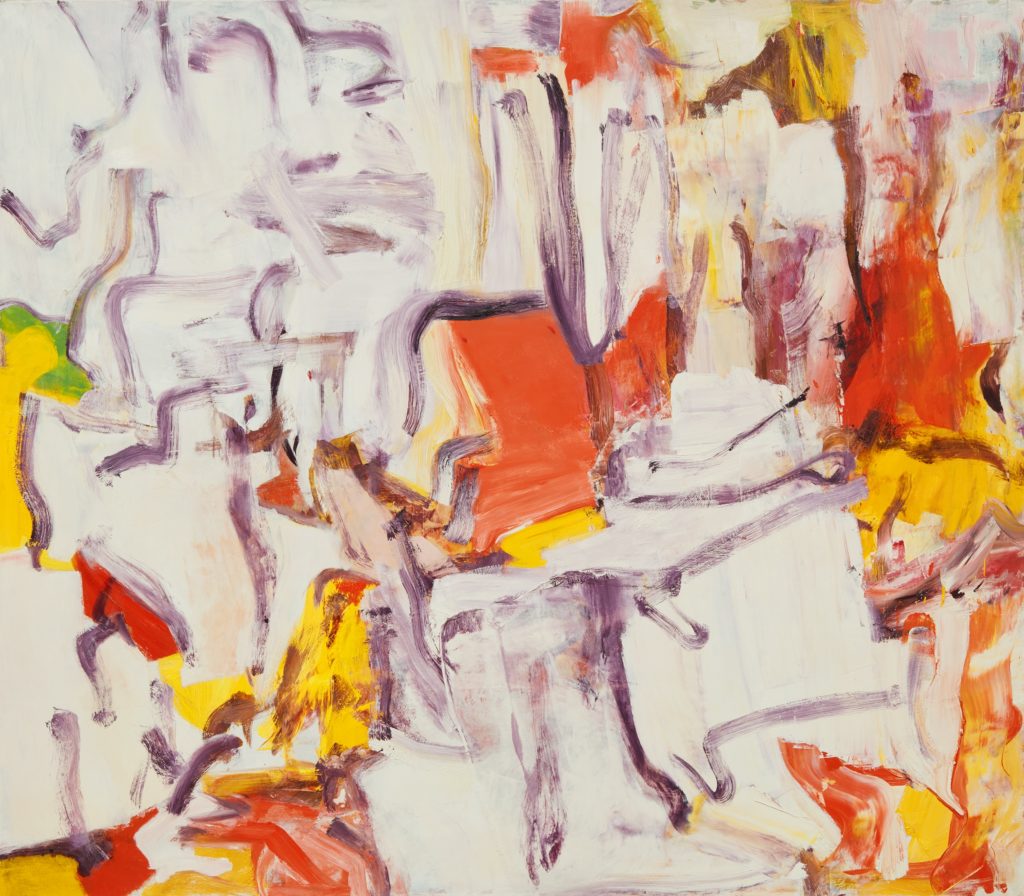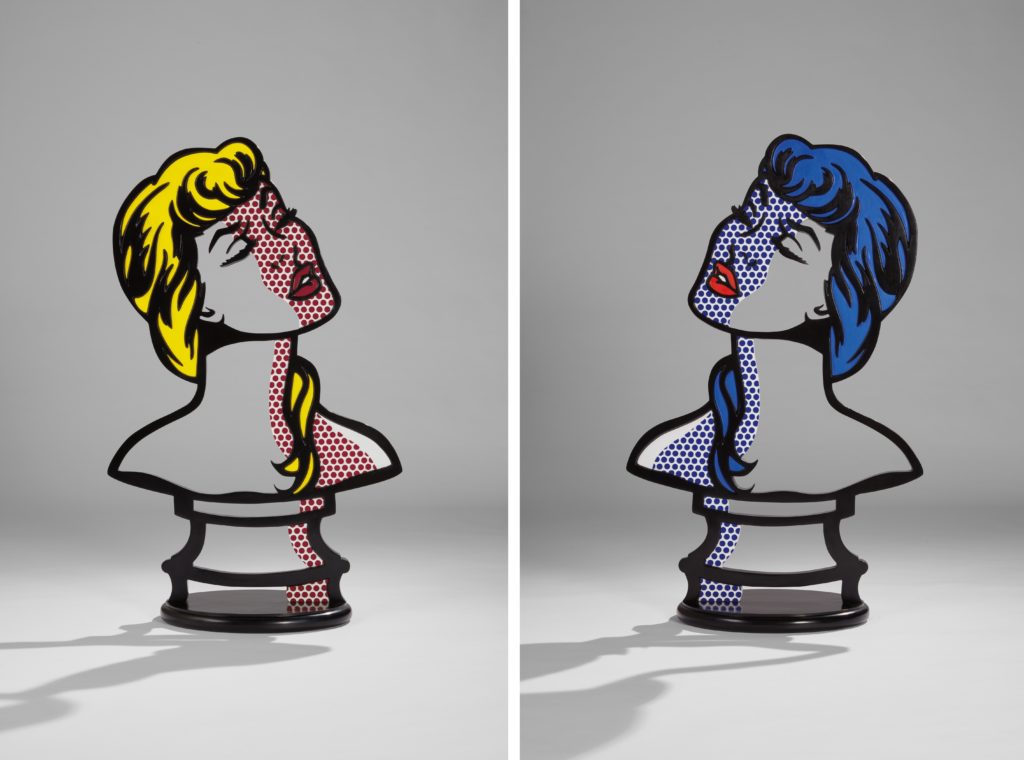Art World
After a Richter Drops Out, Phillips Delivers a White-Glove $110 Million Sale
The house set a new record for Peter Doig and made bank with Basquiat.

The house set a new record for Peter Doig and made bank with Basquiat.

Henri Neuendorf

Despite the unexpected withdrawal of one of the evening’s top lots, Gerhard Richter’s Abstraktes Bild (1994) (est. $15–20 million), Phillips achieved a solid total of $110.2 million for its spring evening sale, with 100 percent of the 37 lots offered finding new owners.
The sale fell comfortably toward the upper end of the evening’s revised presale estimate of $80.1–110.3 million, though the final total was in fact closer to the original low estimate of “in excess of $107 million” (which included the Richter and two other withdrawn works).
Since Christie’s veteran Ed Dolman joined Phillips as CEO in 2014, the perennial third-place house has poured significant resources into hiring a number of high-profile staffers from competitors Christie’s and Sotheby’s and worked to rebrand itself as a nimble boutique alternative to the Big Two.
Murmurs spread around the room when the auctioneer announced the withdrawal of the Richter picture, which was removed from the sale alongside Mark Grotjahn’s Untitled (Colored Butterfly White Sides 691) (2007) ($1–1.5 million) and Alexander Calder’s Haute-couture (1976) ($800,000–1.2 million).
But early anxieties were dispelled when the opening lot reached a record price right off the bat. Nicole Eisenman’s Winter Solstice 2012 Dinner Party (2009) went to a telephone bidder for $670,000, more than four times its high estimate of $150,000. After a prolonged sequence of bids, the winner jumped into the fray late, at the $500,000-mark.
In the absence of the Richter, all eyes were on Peter Doig’s large-scale canvas Rosedale (1991). Doig created the work—as well as a small number of other large-format canvases—shortly after his graduation from the Chelsea College of Art and Design and before his first solo exhibition at the Whitechapel Gallery.
Bidding began at $22 million; the picture prompted a three-way bidding war among potential buyers on the telephones. The gavel finally dropped amid applause at $28.8 million, a new record for the Scottish painter. The artist’s previous record of $25.9 million was set just two years ago for Swamped (1990) at Christie’s.
The second-highest selling lot of the night, Willem de Kooning’s Untitled II (1980), which was being offered at auction for the first time, sold to a telephone bidder for $13.1 million, just over the low end of the $12–18 million estimate. (Final sales prices reported by the auction house include the house’s premium; presale estimates do not.)

Willem de Kooning’s Untitled II (1980). Photo: courtesy of Phillips.
Expectations were high ahead of the sale, given that Phillips had managed to secure a number of high-profile consignments, including work from the collection of New York’s Museum of Modern Art, the estate of Jean-Michel Basquiat (which consigned two works), the estate of Roy Lichtenstein (which consigned one), and the private collectors Martin Margulies and William Hokin. (The house also achieved its highest-grossing day sale in company history on Wednesday.)
Speaking to artnet News ahead of the sale, former Christie’s executive Doug Woodham said, “Who would’ve thought that a Peter Doig painting of that quality would show up at Phillips? I was like, ‘Wow!’ I mean, ‘Wow, wow, wow!’ That Lichtenstein, the Basquiat, and the Peter Doig are really vivid signs that consignors see more quality across the three houses.” He noted that “foundations tend to be very deliberative about who they’re going to use to sell work.”
But those consignments didn’t come cheap. Phillips hedged its bets and guaranteed ahead of time that nearly a third of the lots would sell. (Ten of the lots were guaranteed by the auction house itself, while seven were backed by third parties.)
Still, the Lichtenstein estate’s confidence in Phillips paid off: the artist’s Woman: Sunlight, Moonlight (executed in 1996) changed hands for $10.3 million, a record for a Lichtenstein sculpture. And both lots consigned by Basquiat’s estate exceeded their low estimates. Untitled (Venus 2000 B.C.) (1982) reached $2.6 million (est. $2–3 million), while Untitled (ca. 1984) was bought by a Japanese buyer in the room for $3.6 million (est. $2–3 million). (ARTnews identified the buyer—who also took home a $1.3 million work by Kazuo Shiraga—as Hiroshi Hashimoto of Tokyo.)

Roy Lichtenstein’s Woman: Sunlight, Moonlight (1996). Photo: courtesy of Phillips.
Some works didn’t quite meet presale expectations. Adrian Ghenie’s picture Charles Darwin as a Young Man (2014) got a muted reception considering the painter’s uber-hot market. It achieved $610,000 with fees, just scraping over the low estimate of $600,000 (and well under the high estimate of $800,000).
After the sale, Phillips CEO Ed Dolman noted that the total was more than double that of Phillips’ equivalent auction in May of last year. (The night’s total was closer to Phillips’ November evening sale tally of $111.2 million.)
“I think the art market is much stronger than it was this time last year, there’s much more confidence there,” Dolman said. “It seems to be sensible and rational, there is no very extraordinary frothy bidding anywhere. Most of the works that are good are making their money. I think its a very stable and predictable art market right now, which is great for everybody.”
Additional reporting by Eileen Kinsella